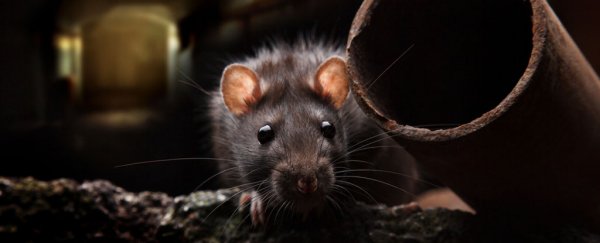New Zealand has announced an ambitious plan to become "Predator Free", vowing to kill all invasive pests that have been introduced to the country by the year 2050.
The island nation's government says it has to act now to save its native wildlife from introduced pests – in addition to protecting primary industries, with invasive species costing the local economy around US$2.3 billion annually.
"While once the greatest threat to our native wildlife was poaching and deforestation, it is now introduced predators," said New Zealand Prime Minister John Key.
"Rats, possums, and stoats kill 25 million of our native birds every year, and prey on other native species such as lizards and, along with the rest of our environment, we must do more to protect them."
To eradicate the vermin, the government is creating a new joint venture company called Predator Free New Zealand, which will oversee the use of traps, poisons, fences, air-drops and other means to control and wipe out invasive species.
It will invest US$20 million in the venture initially, on top of US$50 million already committed by the government to pest control efforts annually.
But the total outlay would be a lot more. A 2015 study by Kiwi researchers found that an eradication effort could cost as much as $6.2 billion over 50 years – although, provided it was successful in wiping out the pests, that would be a lot cheaper than doing nothing, as pest management and agricultural costs would run up to over $11 billion in the same period.
"That's why we have adopted this goal. Our ambition is that by 2050 every single part of New Zealand will be completely free of rats, stoats, and possums," said Key.
"This is the most ambitious conservation project attempted anywhere in the world, but we believe if we all work together as a country we can achieve it."
If the project can be pulled off – and it's a big vision, which will take decades to see to completion – scientists think it could be a world-first achievement in terms of a massive, coordinated conservation effort.
"Even the intention of making New Zealand predator free is hugely significant and now it has money and the government behind it I believe it is possible, I am actually very excited," conservation researcher Mick Clout from the University of Auckland told Eleanor Ainge Roy at The Guardian.
"The biggest challenge will be the rats and mice in urban areas. For this project to work it will need the urban communities to get on board. Possum extermination will be the easiest because they only breed once a year and there are already effective control methods in place."
But it won't be simple. While New Zealand has had success in eradicating up to 90 percent of pests on some of its small islands, hitting 100 percent for the whole country – and staying there, by making sure no new pests sneak onto shore from boats – is "the modern equivalent to landing someone on Mars", as conservation biologist James Russell from the University of Auckland put it to Elizabeth Pennisi at Science.
And not everybody will be on board with a plan that involves the mass slaughter of animals, whether they're considered 'pests' or not. A scheme to cull feral cats in Australia caused considerable controversy when it was announced by the Australian government last year.
The New Zealand project has a number of interim goals to hit by 2025, including suppressing or removing pests in 1 million hectares of land, and the development of a "scientific breakthrough capable of removing at least one small mammalian predator from New Zealand entirely", the exact nature of which is yet unclear.
"It's a really big, bold policy. If [New Zealand] can even make progress toward that goal, species will be in much better shape," conservation biologist Holly Jones from Northern Illinois University told Michael Greshko at National Geographic.
"It's hard for me to imagine how they'll get it done at this scale, though I laud the announcement. But if anyone can do it, it's definitely the Kiwis."
